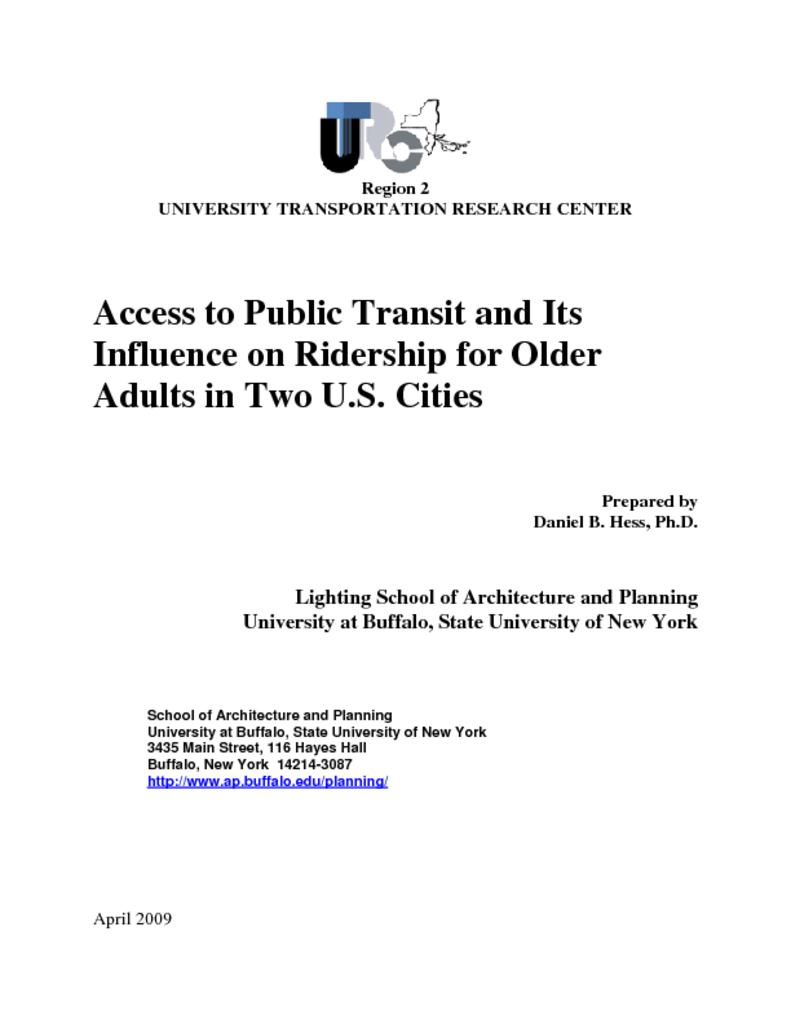<p>Growth in the population of older adults (age 60 and above) in coming years will challenge urban planners and transportation managers to provide travel options that support autonomy. To investigate barriers that older adults experience in using public transit, this research explores associations between older adults who do and do not ride fixed-route public transit and their neighborhood walking access to buses and trains. The research tests whether or not the distance between a trip origin or destination and a transit stop or station is a significant factor in predicting frequency of transit ridership. Data from a survey of older adults in California and New York is used to regress older adults? frequency of riding public transit against explanatory variables, including demographic and socioeconomic variables, access and mobility measures, and neighborhood characteristics. Findings suggest that self-reported walking distance to transit has a statistically significant influence?in San Jos?, California, but not in Buffalo, New York?in predicting transit ridership frequency. Drivers are more sensitive to walking distance than nondrivers. Models estimate that in San Jos?, each additional five minutes in perceived walking time to transit decreases transit ridership frequency by five percent for nondrivers and by 25 percent for drivers. Older adults are likely to ride transit more often if they are male, nonwhite, and low income.</p>




